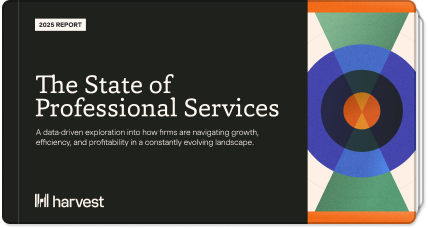Juggling various projects across different team members can be energizing — with so many initiatives on the horizon, the excitement is hard to ignore. Yet at the exact same time, it can also drain your energy as soon as you realize just how many results you need to capture and share, especially when the projects are interrelated and dependent on each other.
Luckily all it takes is a little structure to get the job(s) done — and project portfolio management (PPM) is the key to ensuring you have it. The organizational model helps you look at the bigger picture, organize data, and highlight important details in your portfolio.
Let’s dive into everything you need to get started successfully implementing your PPM strategy to achieve the best results.
What is project portfolio management?
To put it simply, project portfolio management is the centralized management of one or more project portfolios. It helps connect your team’s daily tasks with your overall organizational strategy and allows you to track business priorities while also seeing the big picture from start to finish.
With the right PPM strategy you can identify and choose the projects that will offer the best return on investment before utilizing the necessary resources to get them moving.
It’s important to note that PPM is different from project management. Take a look at the chart below to see the differences in what they’re used for:
|
Project management |
Project portfolio management |
|
Planning, managing, and executing one initiative |
Managing multiple projects and large-scale initiatives |
|
Team collaboration for one project |
Coordinating across cross-functional teams |
|
Assigning roles and responsibilities |
Assessing the right projects |
|
Task management |
Organizing and tracking your team’s priorities |
|
Visualizing progress across initiatives |
|
|
Connecting daily work to strategic objectives |
|
|
Staying on top of business goals |
|
|
Risk management and mitigation |
|
|
Task management |
Why is project portfolio management important?
Think of PPM as a gatekeeper between your team’s bandwidth and the potential projects you could execute on in a given period of time. You want to identify the projects that simultaneously align with your objectives and provide the highest return on investment.
Without properly managing your project portfolio, your team could end up with too many projects on their plate. But with PPM, you’re able to maintain a high quality of work and assurance that everyone can hit their goals.
What is the project portfolio management process?
To do PPM well, you need the right process — which can be achieved by following the below steps.
1. Align your projects with business goals
Make a list of all projects in your pipeline as well as potential projects that could be added. Categorize them by gathering key project information and determining where they are in their lifecycle. Identify your strategy objectives and goals and clarify which projects are contributing to them, and how.
2. Analyze
Next, take a look at your inventory and analyze each project’s strengths and weaknesses:
- What are the milestones?
- How are resources allocated?
- What is the potential ROI?
- What is the reporting schedule?
Ask questions that will uncover whether or not any duplication exists, whether existing projects can be combined or even paused entirely. It’s also important to assess the risk of your project portfolio as a whole. To do this, compare the anticipated benefit against the probability of success for each project.
3. Share with stakeholders
Make sure your team members have access to the portfolio so they can prioritize their work properly. Additionally, your executive stakeholders should have a dashboard of your portfolio so they can have an easy view of all initiatives in your department — this way they’re empowered to make better decisions with the right insights.
4. Get updates in real-time
Implement a process that ensures your team members are regularly updating their individual initiatives. This way your portfolio can act as a sort of “mission control” — you can see everything in one place and assess dependencies, highlight new project opportunities, and shepherd projects that are at risk of falling behind.
5. Let your portfolio act as a resource management tool
Your portfolio not only keeps everyone up to date on the progress of all projects but it also is a great way to manage your resources. You likely already have a resource management process when planning out each project, but with an overview of your portfolio, you can easily redistribute available resources in case any project is in danger of falling off track.
Helpful project portfolio management tools
Below are a few powerful PPM tools that help you put the pieces of a project together before making any important decisions.
- Cost-benefit analysis: A cost-benefit analysis is a tool that provides a quantitative view of an issue, so you can make decisions based on evidence without letting opinion or bias get in the way. Learn more here.
- Priority matrix: A priority matrix uses criteria like effort and urgency to classify projects, and allows you to quickly decide what to take on first without using guesswork to understand where to allocate your resources. Learn more here.
- Decision tree analysis: A decision tree is a flowchart that helps you choose between several courses of action. It starts with a single decision you need to make, and branches out based on the possible outcomes and solutions. Learn more here.















